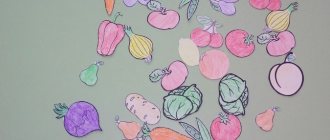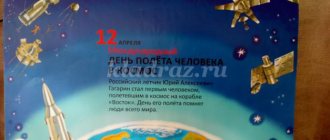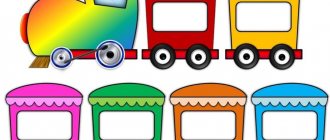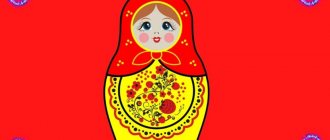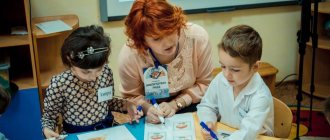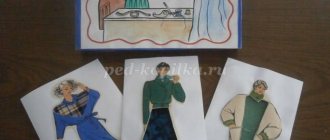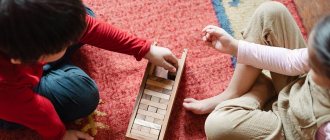MAGAZINE Preschooler.RF
Authors: teacher-speech therapist of MDOU No. 79 Shichanina O.V., teacher of MDOU No. 79 Volkova O.A.The relevance of the electronic game “What - who? Where - Where from?
Speech acquisition in childhood occurs through imitation and practical material. The speech of an adult is both a standard and practical verbal material for a child. By imitating the speech of loved ones and teachers, the child gradually masters all language systems: phonetic, lexical-grammatical, syntactic. The quality of verbal samples that the baby hears and varied speech practice are of great importance for the development of speech. To expand speech practice in preschool age, methods and techniques of storytelling, conversation, verbal exercises and games are used. Games of various themes are used, aimed at developing phonemic perception and clarifying sound pronunciation, expanding and activating the vocabulary, mastering grammatical structures, forming and improving storytelling and retelling skills.
Download the game
The proposed computer game “What - who? Where - Where from? involves the formation and consolidation of skills of competent use in speech of grammatical constructions with prepositions “for, because of”, interrogative pronouns “Who? What?”, self-formulation of questions.
The game is intended for children 4-6 years old. Can be used by educators, speech therapists, and parents as a tool for the development and correction of children's speech. Initially, the game is played by an adult; As children master the game, they are encouraged to play the game, ask questions and evaluate the answers.
Progress of the game.
Org. moment. Before getting acquainted with the electronic game, it is recommended to use practical material with children to clarify their understanding of grammatical constructions with the prepositions “for, because of.” Exercises are carried out with the following instructions:
- 1. Teacher: “Tanya, stand behind the closet (door, screen)!” Performing an action by a child.
- 2. Teacher: “Where is Tanya standing?” Sample response from children: “Tanya is standing behind the closet”
- 3. Teacher: “Tanya, come out from behind the closet (door, screen)!” Performing an action by a child.
- 4. Teacher: “Where did Tanya come from?” Sample response from children: “Tanya came out from behind the closet”
Exercises with inanimate objects are carried out using the same algorithm. For example: “Hide the bear behind the chair! Where is the bear sitting? “Get the teddy bear from behind the chair! Where did you get the bear from?
After studying with practical material, you can start playing the electronic game.
Slide “Toys and box”
- 1. Teacher: “Look and name what it is?” (the arrow points to each item in turn). Sample response from children: “This is a car”
- 2. Teacher: “Ask your neighbor about the subject, saying his name.” Sample questions from children: “Tanya, what is this?”, “Vanya, what is this?” etc.
- 3. The teacher uses the “Enter” key to move the box, closing the toys one by one, and asks the question: “Where is the car?” Sample response from children: “The car is behind the box”
- 4. Teacher: “What did we hide behind the box?” Sample response from children: “They hid toys behind the box”
Slide "Box"
- 1. The teacher, using the “Enter” key, pulls out a picture with a toy from behind the box and asks the children: “Where did you get the toy from?” Sample response from children: “They took the car out from behind the box”
- 2. Teacher: “What did we take out from behind the box?” Sample response from children: “Toys were taken out from behind the box”
Slide "Dishes"
- 1. Teacher: “Look and name what it is?” (the arrow points to each item in turn). Sample response from children: “This is a mug”
- 2. Teacher: “Ask your neighbor about the subject, saying his name.” Sample questions from children: “Tanya, what is this?”, “Vanya, what is this?” etc.
- 3. The teacher uses the “Enter” key to move the pan, covering the dishes one by one, and asks the question: “Where is the mug?” Sample children's answer: “The mug behind the pan”
- 4. Teacher: “What were we hiding behind the pan?” Sample response from children: “They hid the dishes behind the pot”
Slide "Pan"
- 1. The teacher, using the “Enter” key, pulls out a picture with a piece of utensils from behind the pan and asks the children: “Where did you get the mug?” Sample response from children: “The mug was taken out from behind the pan”
- 2. Teacher: “What were we getting out of the pan?” Sample response from children: “The dishes were taken out from behind the pan.”
Slide “Vegetables and a bucket”
- 5. Teacher: “Look and name what it is?” (the arrow points to each item in turn). Sample response from children: “This is a cucumber”
- 6. Teacher: “Ask your neighbor about the subject, saying his name.” Sample questions from children: “Tanya, what is this?”, “Vanya, what is this?” etc.
- 7. The teacher uses the “Enter” key to move the bucket, covering the vegetables one by one, and asks the question: “Where is the cucumber?” Sample children's answer: “Cucumber behind a bucket”
- 8. Teacher: “What did we hide behind the bucket?” Sample response from children: “They hid vegetables behind a bucket”
Slide "Bucket"
- 3. The teacher uses the “Enter” key to pull out a picture of a vegetable from behind the bucket and asks the children: “Where did you get the cucumber?” Sample response from children: “The cucumber was taken out from behind the bucket.”
- 4. Teacher: “What did we get from behind the bucket?” Sample response from children: “They were getting vegetables from behind the bucket.”
Slide “Fruits and basket”
- 9. Teacher: “Look and name what it is?” (the arrow points to each item in turn). Sample response from children: “This is an apple”
10. Teacher: “Ask your neighbor about the subject, saying his name.” Sample questions from children: “Tanya, what is this?”, “Vanya, what is this?” etc.
11. The teacher moves the basket with the “Enter” key, covering the fruits one by one, and asks the question: “Where is the apple?” Sample children's answer: “The apple is behind the basket”
12. Teacher: “What did we hide behind the basket?” Sample response from children: “They hid fruits behind the basket”
Slide "Basket"
- 5. The teacher uses the “Enter” key to pull out a picture of a fruit from behind the basket and asks the children: “Where did you get the apple?” Sample response from children: “The apple was taken out from behind the basket.”
- 6. Teacher: “What did we get out of the basket?” Sample response from children: “Fruits were taken out from behind the basket.”
Slide “Wild animals and wood”
13. Teacher: “Look and name who it is?” (the arrow points to each item in turn). Sample response from children: “This is a hare”
14. Teacher: “Ask your neighbor about the subject, saying his name.” Sample questions from children: “Tanya, who is this?”, “Vanya, who is this?” etc.
15. The teacher uses the “Enter” key to move the tree, covering wild animals one by one, and asks the question: “Where is the hare hiding?” Sample response from children: “The hare hid behind a tree.”
16. Teacher: “Whom did we hide behind the tree?” Sample children’s answer: “Wild animals were hidden behind the tree”
Slide "Tree"
- 7. The teacher, using the “Enter” key, pulls out a picture with a wild animal from behind a tree and asks the children: “Where did the bunny come from?” Sample response from children: “The bunny looked out from behind the tree”
- 8. Teacher: “Who is peeking out from behind the tree?” Sample children’s answer: “Wild animals are peeking out from behind the tree.”
Slide “Baby Pets and House”
17. Teacher: “Look and name who it is?” (the arrow points to each item in turn). Sample response from children: “This is a dog”
18. Teacher: “Ask your neighbor about the subject, saying his name.” Sample questions from children: “Tanya, who is this?”, “Vanya, who is this?” etc.
19. The teacher uses the “Enter” key to move the house, covering the baby animals one by one, and asks the question: “Where is the dog hiding?” Sample response from children: “The dog hid behind the house”
20. Teacher: “Who did we hide behind the house?” Sample children’s answer: “We hid the baby animals behind the house.”
Slide "House"
- 9. The teacher, using the “Enter” key, pulls out a picture with a baby pet from behind the house and asks the children: “Where is the dog looking out from?” Sample response from children: “The dog is peeking out from behind the house”
10. Teacher: “Who’s looking out from behind the house?” Sample response from children: “Young domestic animals are peeking out from behind the house.”
| Next > |
Games in kindergarten for children 5-7 years old for an interactive table
Interactive tasks for the interactive table SMART Table
Topic of the week: “Week of Experiments” Game “Do you know the properties of objects?” Goal: Creating motivation for preschoolers to use knowledge about the properties of objects and materials. Preliminary work: conducting experiments with magnets, studying the properties of different states of water, talking about the signs of living and inanimate nature, studying the properties of different materials, watching cartoons "Fixies", guessing riddles about natural phenomena related to water. Age of children: senior preschool age Type of game: “Hot Spaces” 1 task “properties of water”: There are three areas on the screen with a schematic representation of the states of water - “gaseous”, “liquid” and “solid”. Throughout the entire field of the interactive table there are cards with images of different states of water (steam, icicle, fog, ice floe, cloud, puddle, glass of water, drop, sea, river, snowflake). It is necessary to distribute the pictures into areas corresponding to the state of water. When positioned correctly, a solemn melody is heard.
2 task “properties of a magnet”. There are two areas on the screen with schematic images “Attracted by a magnet” and “Not attracted by a magnet”. All over the interactive table there are cards with images of various objects made of different materials (snowflake, paper money, ball, firewood, nails, metal spoon, pan lid, paper clip, porcelain cup, stones, wooden spoons). It is necessary to distribute the pictures into areas, depending on whether they are attracted by a magnet or not. When positioned correctly, a solemn melody is heard.
Task 3 “various materials”. There are five areas on the screen with schematic images of various materials - “Plastic”, “Wood”, “Metal”, “Fabric”, “Paper”. All over the interactive table there are cards with images of various objects made from different materials (paper money, firewood, nails, a metal spoon, a pan lid, a paper clip, applique and paper crafts, wooden spoons, a dress, trousers, plastic toys and a basin, book, ring, chair). It is necessary to distribute the pictures by area, depending on what material they are made of. When positioned correctly, a solemn melody is heard.
4 task “living and inanimate nature”. There are two areas on the screen with schematic images - “Living nature - sprout”, and “Inanimate nature - stone”. Throughout the entire field of the interactive table there are cards with images of various objects related to living and inanimate nature (sun, dragonfly, dandelion, snow, paper flowers, toy, fox, stones, pike, pigeon, man, ice floe). It is necessary to distribute the pictures by area, depending on what they relate to - living or inanimate nature. Ask the children to justify their answer by naming the signs of a living thing. When positioned correctly, a solemn melody is heard.
The game can be used in joint activities of children and adults, as well as in independent activities of preschoolers. When playing together with an adult, the teacher can ask the children to explain why this or that picture is suitable. Perspective: The adult invites the children to act as teachers for children from another group. The game was created in the SMART Table Toolkit program
We recommend watching:
Games on a tourism theme for older preschoolers. Abstract of educational activities with a presentation for children of the senior group on the topic: The Stolen Fairy Tale. The use of educational technologies in kindergarten. The use of ICT in the educational process in preschool educational institutions. From work experience. Presentation
Similar articles:
Outdoor games for children from 3 to 5 years old
Games for attention
Word games for preschoolers
Tricks for children 4-7 years old in kindergarten
Assignments on the topic “Fruits” for children 5-8 years old
